|
 Gymnomyces fuscus Gymnomyces fuscus
BiostatusPresent in region - Indigenous. Endemic
Images (click to enlarge)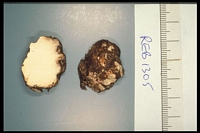
Owner: R.E. Beever | 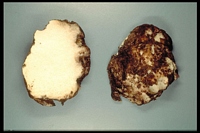
Owner: R.E. Beever | 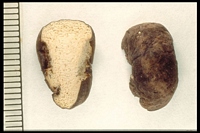
Owner: R.E. Beever | 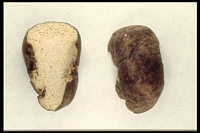
Owner: R.E. Beever | 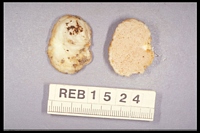
Owner: R.E. Beever | 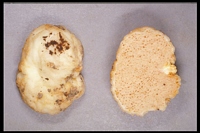
Owner: R.E. Beever | 
Owner: R.E. Beever | 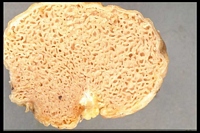
Owner: R.E. Beever | 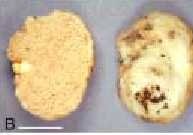
Caption: Fig. 3 B, Gymnomyces fuscus; Scale bar = 10 mm. | 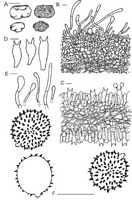
Caption: Fig. 4 Gymnomyces fuscus. A,Basidioma; B, peridiopellis and peridial context; C,
hymenophoral trama and hymenium; D, basidia; E, hymenophoral c | 
Caption: Fig. 5 Spores of Gymnomyces fuscus. Scale bars= 10 mm. |
Article: Lebel, T. (2002). Sequestrate Russulales of New Zealand: Gymnomyces and Macowanites. New Zealand Journal of Botany 40(3): 489-509 (http://www.rsnz.org/publish/abstracts.php).
Description: Basidiomata 12-19 x 10-16 mm, subglobose to slightly irregular. Peridial surface dry,
smooth, with some shallow pitting, initially off-white to pale brown then dark brown with the
lower peridium whitish streaking dark in some basidiomata. Some basidiomata with powdery
texture to peridium, powder rubbing off easily. Gleba off-white to ivory initially blackening
with age, loculate, chambers small, crowded, regular in size and shape. Stipe absent or present
as small exserted basal pad, 1-2 mm long x 1-2 mm wide, white. Columella
sometimes present as thin translucent strand, 1-2 mmwide, percurrent or not. Odour sharp, of
acetylene, and taste mild, not distinctive. Latex absent. Peridiopellis 60-165 µm wide, a
trichodermium of septate, inflated hyphae 3-8.5 µm diam., appearing as a layer of irregularly
shaped cells 45-80 µm wide, extending into a dense to patchy turf of upright to repent, septate,
brown-walled hyphae, 25-85 µm wide, with terminal cells 4-13 x 3-11 µm, elongated clavate,
cylindrical, obvate or pyriform. Peridial context 40-110 µm wide, of interwoven,
hyaline hyphae 2-4 µm diam. Sphaerocysts and endocystidia absent. Hymenophoral trama
23-39 µm wide, of interwoven, inflated, hyaline hyphae 2-6.5 µm diam., sphaerocysts absent.
Subhymenium 13-21 µm wide, of branched hyphae with some inflated cells forming 1-3 tiers
of irregular cells 5-11 µm diam. Basidia 24-39 x 6-12 µm, hyaline, clavate to cylindrical, with
2 robust sterigmata 4-8 µm long x 1-2.5 µm wide. Cystidia absent. Spores 8-10.9 x 8-10.4
µm (9.89 ± 0.26 x 9.5 ± 0.31), Q = 1.02-1.05, globose, orthotropic. Ornamentation
amyloid, crowded, of fine, isolated spines 0.8-2 µm high. Hilar appendix small, hyaline,
central; plage absent. Spore colour in mass white.
Habitat: HABITAT AND DISTRIBUTION: Hypogeous, in small clusters under leaf litter in
Leptospermum scopariumscrub and Nothofagus truncatus or N. fusca forest. Fruiting period
Dec-Jan, Jun.
Notes: ETYMOLOGY: The specific epithet refers to the brown basidiomata, from the Latin fuscus
meaning brown.
NOTES: The dark peridium, lack of stem, and 2-spored basidia are a unique combination
of characters in the sequestrate fungi of New Zealand. Gymnomyces fuscus resembles
Macowanites rubroluteus in the fine spinose spore ornamentation and sometimes dark
appearance of the peridium, but these two species differ in a number of features. G.fuscus has
2-spored basidia and lacks hymenial cystidia, while M. rubroluteus has 2-, 3-, and 4-spored
basidia and hymenial cystidia are present.
|